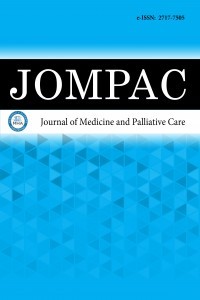1.
Siegel RL, Miller KD, Jemal A. Cancer statistics, 2016. CA CancerJ Clin. 2016;66(1):7-30. doi:10.3322/caac.21332
2.
American Society of Clinical Oncology, Pfister DG, Laurie SA,et al. American Society of Clinical Oncology clinical practiceguideline for the use of larynx-preservation strategies in thetreatment of laryngeal cancer. J Clin Oncol. 2006;24(22):3693-3704. doi:10.1200/JCO.2006.07.4559
3.
Department of Veterans Affairs Laryngeal Cancer Study Group,Wolf GT, Fisher SG, et al. Induction chemotherapy plus radiationcompared with surgery plus radiation in patients with advancedlaryngeal cancer. N Engl J Med. 1991;324(24):1685-1690.doi:10.1056/NEJM199106133242402
4.
Forastiere AA, Goepfert H, Maor M, et al. Concurrentchemotherapy and radiotherapy for organ preservation inadvanced laryngeal cancer. N Engl J Med. 2003;349(22):2091-2098. doi:10.1056/NEJMoa031317
5.
Terrell JE, Fisher SG, Wolf GT. Long-term quality of life aftertreatment of laryngeal cancer. The Veterans Affairs LaryngealCancer Study Group. Arch Otolaryngol Head Neck Surg.1998;124(9):964-971. doi:10.1001/archotol.124.9.964
6.
Richard JM, Sancho-Garnier H, Pessey JJ, et al. Randomized trialof induction chemotherapy in larynx carcinoma. Oral Oncol.1998;34(3):224-228. doi:10.1016/s1368-8375(97)00090-0
7.
World Medical Association.. World Medical AssociationDeclaration of Helsinki. Ethical principles for medicalresearch involving human subjects. Bull World Health Organ.2001;79(4):373-374.
8.
Forastiere AA, Zhang Q, Weber RS, et al. Long-term results ofRTOG 91-11: a comparison of three nonsurgical treatmentstrategies to preserve the larynx in patients with locally advancedlarynx cancer. J Clin Oncol. 2013;31(7):845-852. doi:10.1200/JCO.2012.43.6097
9.
Patel SA, Qureshi MM, Dyer MA, Jalisi S, Grillone G, TruongMT. Comparing surgical and nonsurgical larynx-preservingtreatments with total laryngectomy for locally advanced laryngealcancer. Cancer. 2019;125(19):3367-3377. doi:10.1002/cncr.32292
10.
Stokes WA, Jones BL, Bhatia S, et al. A comparison of overallsurvival for patients with T4 larynx cancer treated with surgicalversus organ-preservation approaches: A National CancerData Base analysis. Cancer. 2017;123(4):600-608. doi:10.1002/cncr.30382
11.
Brandstorp-Boesen J, Falk RS, Boysen M, Brøndbo K. Long-term trends in gender, T-stage, subsite and treatment forlaryngeal cancer at a single center. Eur Arch Otorhinolaryngol.2014;271(12):3233-3239. doi:10.1007/s00405-014-3100-9
12.
Fong PY, Tan SH, Lim DWT, et al. Association of clinical factorswith survival outcomes in laryngeal squamous cell carcinoma(LSCC). PLoS One. 2019;14(11):e0224665. doi:10.1371/journal.pone.0224665
13.
Patel SG, Lydiatt WM, Glastonbury CM, et al. Larynx. Amin MB,ed, American Joint Committee on Cancer staging manual, 8thedn. NewYork: Springer; 2017.
14.
Lewis CM, Chinn SB, Holsinger C, Weber RS. Cancer of theLarynx: Tis, T1, T2 Evaluation and Management. Bernier J, eds,Head and neck cancer multimodality management, 2nd edn.Switzerland: Springer; 2016.
15.
Sharrett JM, Ward MC, Murray E, et al. Tumor volume usefulbeyond classic criteria in selecting larynx cancers for preservationtherapy. Laryngoscope. 2020;130(10):2372-2377. doi:10.1002/lary.28396
16.
Bernier J, Domenge C, Ozsahin M, et al. Postoperative irradiationwith or without concomitant chemotherapy for locally advancedhead and neck cancer. N Engl J Med. 2004;350(19):1945-1952.doi:10.1056/NEJMoa032641

